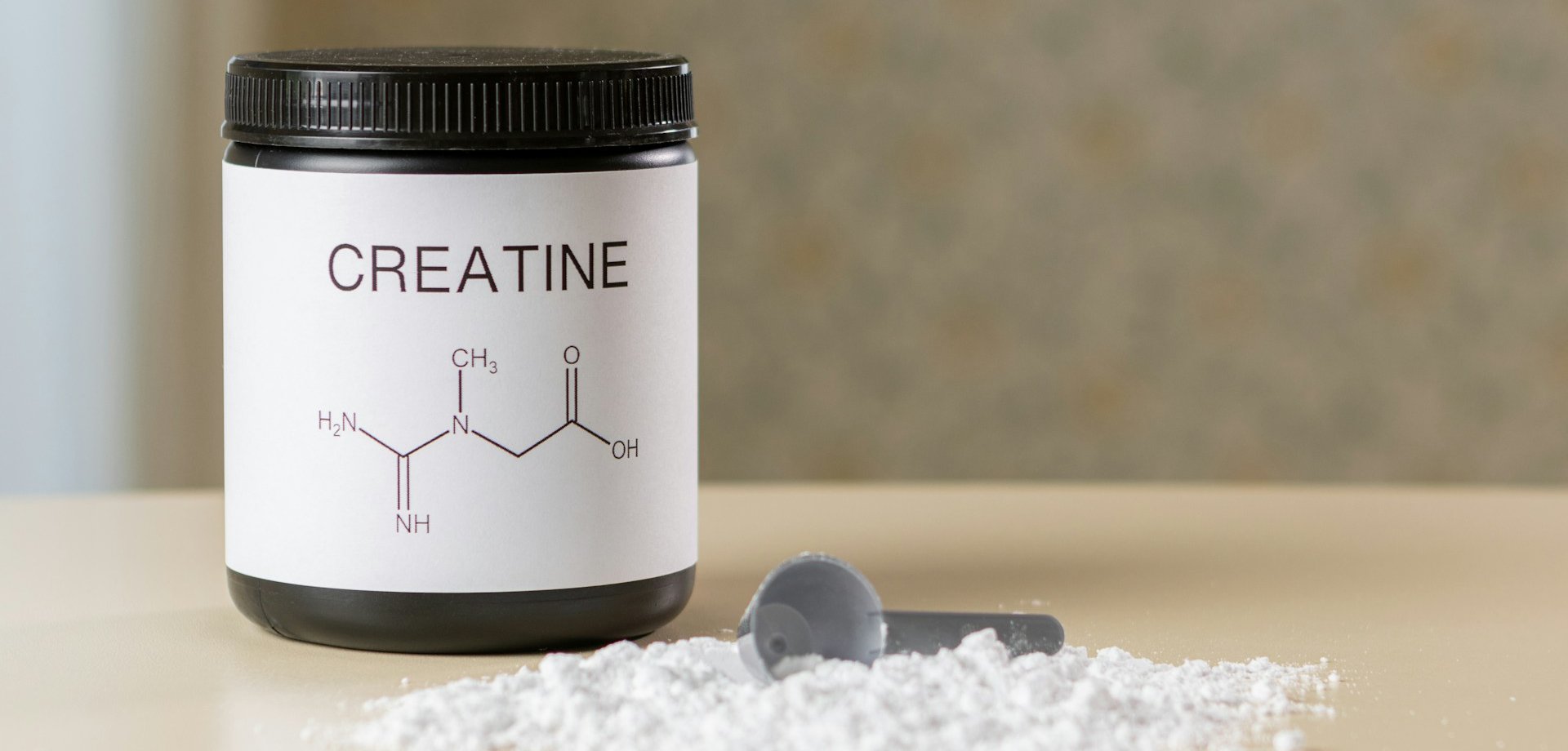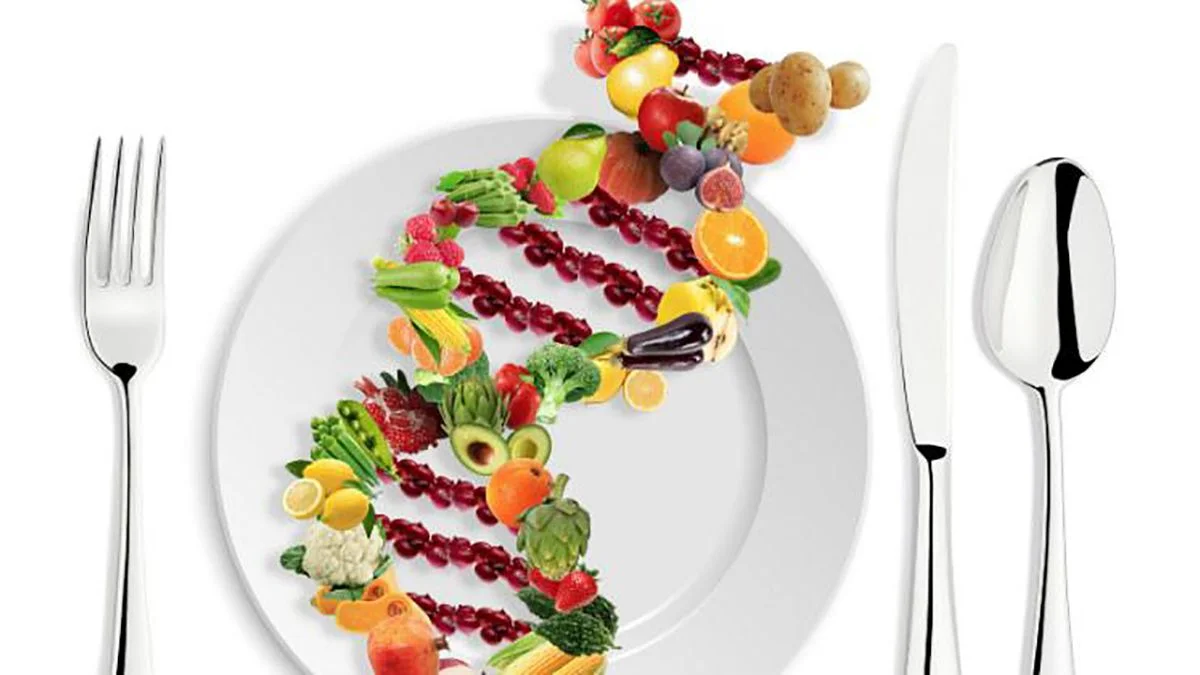Is it healthy to cleanse your diet?
Author:
Julio Valero
Published on:
2/27/2025

Divergent metabolic effects of two energy-restricted diets differing in nutrient quality: a 12-week randomized controlled trial in subjects with abdominal obesity.
Scientific evidence supports the crucial role of weight loss and adequate nutrient intake in disease prevention. Therefore, in this critical review, we emphasize the need for a thorough analysis of relevant studies.
Overview
The research evaluated the impact of two eating plans, with different nutritional compositions, on weight loss and key markers of cardiometabolic health.
One study found that a nutrient-rich diet resulted in significant improvement in disease risk factors and greater weight loss, compared to a nutrient-poor diet. However, potential limitations in the study design are noted.
Simply put, whole foods are great for health because of their nutritional richness, but weight loss itself, regardless of diet, also offers important benefits for disease prevention.
What's the problem?
Obesity is a complex health challenge, influenced by a variety of factors beyond mere personal discipline. Genetic predisposition, the environment in which we live, socioeconomic status, and changes in food composition are just some of the elements that contribute to this problem. The high rate of overweight and obesity in the US population is a clear example of the magnitude of this problem and its impact on disease risk.
The COVID-19 pandemic has exacerbated health inequalities, and people with obesity face a significantly higher risk of serious complications and even death. Given this reality, it is crucial that those who are obese consider strategies to achieve a body weight that minimizes risks. It is important to recognize that the concept of “healthy weight” is complex and multifaceted, and its assessment must be individualized.
Being overweight not only increases vulnerability to COVID-19, but also triggers a series of serious cardiometabolic disorders, including diabetes, hypertension, insulin resistance, and heart failure, affecting the general health of the person.
The relationship between calories consumed and body weight is fundamental, which has prompted the creation of various diets and lifestyle changes to address overweight and obesity. Studies indicate that even modest weight loss, around 5% of initial weight, can lead to significant improvements in cardiometabolic risk factors. Even greater weight reduction potentiates these benefits. It is crucial to differentiate between fat stored in the body and fats present in food. Body fat is accumulated mainly in two forms: subcutaneous adipose tissue (SAT) and visceral adipose tissue (VAT). VAT, which surrounds internal organs, has been directly linked to an increased risk of cardiometabolic diseases.
Biomarkers, along with body fat measurement, are key tools for identifying disease risk factors. The fat we consume is divided into two main categories: saturated and unsaturated. The difference lies in their chemical structure, specifically the carbon bonds. Saturated fats, common in animal foods such as meat and butter, are one example.
Unsaturated fats, mostly of plant origin, include monounsaturated (with one double bond) and polyunsaturated (with multiple double bonds) fatty acids, present in foods such as avocado, nuts, and vegetable oils. While it has been observed that replacing saturated or trans fats with polyunsaturated fats may have cardiovascular benefits, the evidence is not conclusive and critical evaluation is needed.
There is data suggesting benefits for cardiovascular disease risk factors by replacing monounsaturated fats from animal sources with monounsaturated fats from plant sources. Although this is a single study, these findings together support the hypothesis that partial replacement of animal-based foods with plant-based sources could contribute to the reduction of body fat and the improvement of various health biomarkers. Below, we will take a closer look at the study in question.
Purpose
The purpose of this study was to analyze the effect of two diets, with different composition of essential nutrients, on weight loss and various cardiometabolic health indicators.
Hypothesis
Although the hypothesis was not explicitly stated, the article showed a clear tendency to favor the benefits of a high-quality diet over cardiometabolic risk factors.
What Did They Test and How?
Participants
A study was conducted with 100 participants (men and women aged 40–70 years) with abdominal obesity (BMI > 27 kg/m²) and stable weight for the past three months. Initially, 110 participants were randomly assigned to three study groups. However, 10 participants dropped out of the study, 2 were excluded due to incomplete data, 4 withdrew due to pre-existing medical conditions, and 3 due to difficulties with diet.
Study Procedures
In this 12-week study, participants were randomly assigned to one of three groups: control, high-nutrient diet, and low-nutrient diet. Diet groups reduced their caloric intake by 25% from their maintenance needs, as estimated using Schofield equations and an activity factor based on reported physical activity. The high-nutrient diet was characterized by higher monounsaturated and n-3 polyunsaturated fatty acids, fiber, soy protein, and lower fructose, and supplementation with 400 mg EPA and 300 mg DHA. Diet adherence was assessed weekly by food collections and food diaries. Metabolic health was assessed by a shake test before and after the study.
Table 1 Meal plans of the two experimental diets: Low quality
and high quality diet.
Low quality diet group | High quality diet group | |
Breakfast | Refined wheat bread with butter (81.1% fat) and jam | Whole grain wheat bread with low-fat margarine (30% fat), jam |
Snack | Ginger bread (3.5% fiber; 1.2% fat) with butter (81.1% fat) | Fruit |
Lunch | Refined wheat bread with butter (81.1% fat) | Whole grain wheat bread with |
Snack | Fruit | Fruit |
Dinner | Vegetables (raw/cooked/steamed/stir-fried) | Vegetables (raw/cooked/steamed/stir-fried) |
Snack | Fruit | Soy nuts (19% fiber; 23.3% fat) |
Extra | Low-sodium salt alternative | Low-sodium salt alternative |
Products in bold and underscore indicate key food products supplied weekly to the participants. * MusclePharm Corporation, Denver, USA. Fish oil capsules contained
400mg EPA and 300mg DHA according to manufacturers’ label.

Measurements
Body composition: Participants' body weight was monitored weekly. Magnetic resonance imaging (MRI) was used to assess changes in body fat distribution. Additionally, in a subgroup of participants (n=41), adipose tissue biopsies were performed to analyze adipocyte perimeter and specific genetic markers. This subgroup was divided into three groups: participants with low adipose tissue quality (n=22), participants with high quality (n=9), and a control group (n=10). The methods section did not provide sufficient details on the exact procedure used to measure changes in body weight.
Metabolic health: Glycemic and insulin response were assessed using a tolerance test to a 915.6 calorie shake (60 g fat, 76.3 g carbohydrates, 17.6 g protein), measuring blood glucose and insulin at 30, 60, 120, 180, 240 and 360 minutes post-consumption.
Biomarkers: Various biomarkers were analyzed in blood plasma, with special attention to changes between baseline and post-test in: glucose, insulin, HbA1c, HOMA-IR and QUICKI indices, total cholesterol, HDL, triglycerides and free fatty acids.
¿What Did They Find?
Reported Dietary Intakes
Caloric intake was similar between diet groups, but significant differences were observed in the intake of specific nutrients such as soy protein, fiber, n-3 monounsaturated and polyunsaturated fats, and fructose (p < 0.001).
Table 2 Differences between self-reported nutritional intake of participants in the two diet groups
Nutrients | Low quality diet | High quality diet | P value of differences between diets |
Energy intake | 1703 ± 196 | 1689 ± 239 | 0.778 |
ER % | 23.9 ± 0.82 | 26.2 ± 5.9 | 0.775 |
En% fat | 31.4 ± 1.6 | 32.5 ± 1.2 | 0.001 |
En% SFA | 14.9 ± 1.5 | 8.3 ± 0.6 | <0.001 |
En% MUFA | 9.3 ± 1.0 | 13.4 ± 0.9 | <0.001 |
En% PUFA | 4.1 ± 0.8 | 7.7 ± 0.4 | <0.001 |
En% trans fat | 0.2 ± 0.0 | 0.1 ± 0.0 | 0.015 |
ALA, mg | 1104 ± 278 | 1815 ± 354 | <0.001 |
EPA and DHA, mg | 103 ± 226 | 1224 ± 55 | <0.001 |
Cholesterol, mg | 185 ± 30 | 132 ± 20 | <0.001 |
En% protein | 16.0 ± 1.4 | 20.6 ±1.7 | <0.001 |
En% animal-based | 10.3 ± 1.1 | 10.3 ± 1.9 | 0.886 |
En% plant-based | 5.7 ± 1.0 | 10.3 ± 0.5 | <0.001 |
En% carbohydrates | 49.6 ± 2.0 | 43.7 ± 1.5 | <0.001 |
En% mono-and disaccharides | 24.8 ± 1.9 | 18.8 ±1.1 | <0.001 |
En% polysaccharides | 24.8 ± 1.2 | 24.9 ± 1.1 | 0.905 |
En% fructose | 7.0 ± 0.9 | 3.4 ± 0.4 | <0.001 |
En% fiber | 2.2 ± 0.2 | 3.1 ± 0.2 | <0.001 |
En% alcohol | 1.1 ± 0.9 | 1.0± 0.7 | 0.599 |
Sodium, g | 2.3 ± 0.6 | 2.3 ±0.4 | 0.659 |
Data are mean ± SD. Researchers calculated values based on the Dutch Food Composition Database 2011 (NEVO 2011/3.0, RIVM). Differences between diets were assessed using a paired t-test. ALA, ⍺-linolenic acid; EN%, energy percentage; ER, energy restriction.
Body Composition Changes
Both diet groups experienced significant weight loss. However, the high-quality diet resulted in significantly greater weight loss (2.1 kg extra) compared to the low-quality diet (p = 0.007). Figure 2 shows the weekly evolution of weight loss in the three study groups.
Figure 2 Cumulative weight loss in the three study groups over the 12-week study duration
Error bars represent 1SD. *Significant difference in weight loss between the 2 diet groups at a p value <0.05.
No significant differences were found in adipocyte size between the groups studied (Table 3). The VAT/SAT ratio decreased similarly in both diet groups, although the reduction was significantly greater in the high-quality diet group compared to the control group. Intrahepatic lipids decreased in both the high-quality (55%) and low-quality (46%) diet groups, with no significant differences between them (p = 0.129).
Variable | Low quality diet | High quality diet | Control |
Body weight, kg | - 6.3 ± 3.9 | - 8.4 ± 3.2 | 0.8 ± 1.7 |
BMI, kg/m2 | - 2.1 ± 1.3 | - 2.8 ± 1.1 | 0.3 ± 0.6 |
SAT, cm2 | - 45.3 ± 32.7 | - 54.1 ± 55.3 | 1.6 ± 36.9 |
VAT, cm2 | - 44.1 ± 48.2 | - 61.5 ± 51.3 | 3.7 ± 17.9 |
VAT/SAT ratio | - 9.4 ± 16.9 | - 16.0 ± 28.1 | 0.8 ± 6.3 |
Adipocyte size, mm | - 164 ± 458 | - 508 ± 418 | 137 ± 714 |
Data represent mean ± 1 SD changes.
Biomarkers
Both diet groups showed significant improvements in fasting glucose and insulin levels, as well as in the QUICKI (insulin sensitivity) index, with no notable differences between them. However, the high-quality diet group experienced a greater reduction in triglycerides and total cholesterol compared to the low-quality diet group. HbA1c levels did not vary significantly between groups.
Shake test
The study revealed no significant differences in insulin or glucose response between the diet groups during the shake test (see Figure 3). However, both diets demonstrated a significant reduction in blood glucose levels after the intervention.
Figure 3 Changes in postprandial responses of glucose and insulin to a shake test
Curves reflect the changes in postprandial levels compared to the fasting levels before and after the 12-week dietary intervention. A: plasma glucose, B: plasma insulin. * indicates a significant difference in response after 12-weeks of dieting. Error bars represent 1 SD.
What Do the Findings Mean?
This study has significant limitations that require cautious interpretation of its results. The disparity in weight loss between groups, being greater in the high-quality diet group, introduces an important confounding variable. Despite efforts to control for other variables, the difference in weight loss could be the determining factor in the observed improvements in health markers. Therefore, these improvements cannot be conclusively attributed solely to the composition of the diet. It is crucial to consider that weight loss, by itself, has a significant impact on health, especially in overweight or obese individuals. When evaluating this study, it is essential to take this limitation into account and recognize that weight loss could be an important contributing factor in the observed results.

Variations in weight loss among participants could be due to several factors. First, although the reported caloric intake data did not show significant differences, there were likely inaccuracies in these records. We acknowledge that the authors pointed out this limitation, as well as the possible influence of protein and fiber, points with which we agree.
However, we believe that nutrition is not the only determining factor. The fact that both participants and dietitians knew the assigned diets (with the exception of the analysis team) could have introduced biases. It is possible that participants who knew they were on a "healthy" diet adopted additional behaviors to reinforce that perception, while those on "low-quality" diets could have experienced the opposite effect. In addition, it is well known that people's behavior tends to change when they feel they are being watched.
A crucial limitation of the study lies in the lack of objective measurement of participants' physical activity. This omission, coupled with the possibility of errors in recording dietary intake and differences in protein and fibre consumption, makes interpretation of the results difficult. The greater weight loss seen in the 'high quality' group cannot be attributed solely to a specific nutrient. More robust conclusions would require a study to be designed that matches rates and magnitudes of weight loss between groups, and then proceeds to modify diets to assess the impact of nutrients in isolation.
How Can You Apply These Findings?
Instead of searching for the perfect diet, focus on creating a sustainable and enjoyable eating style for yourself. Forget about labels of 'good' or 'bad' for foods, as most provide something valuable. Prioritise natural and varied foods such as meats, fruits, vegetables, nuts, fish, whole grains and dairy products. Diversity ensures a greater richness of nutrients, key to your well-being.
Avoid restrictive and extreme diets that promise 'cleansing' or 'detoxing', as these are often difficult to maintain and can lead to frustration. Opt for a flexible approach, where you can adapt your choices according to your tastes, availability and individual needs. Remember, the key is to build long-term healthy habits, not to follow passing fads.
References
Schutte, S., Esser, D., Siebelink, E., Michielsen, C., Daanje, M., Matualatupauw, J. C., Boshuizen, H. C., Mensink, M., Afman, L. A., & Wageningen Belly Fat Study team (2022). Diverging metabolic effects of 2 energy-restricted diets differing in nutrient quality: a 12-week randomized controlled trial in subjects with abdominal obesity. The American journal of clinical nutrition, 116(1), 132–150.
Ren, J., Wu, N. N., Wang, S., Sowers, J. R., & Zhang, Y. (2021). Obesity cardiomyopathy: evidence, mechanisms, and therapeutic implications. Physiological reviews, 101(4), 1745–1807.
Clifton, P. M., & Keogh, J. B. (2017). A systematic review of the effect of dietary saturated and polyunsaturated fat on heart disease. Nutrition, metabolism, and cardiovascular diseases : NMCD, 27(12), 1060–1080.
Guasch-Ferré, M., Babio, N., Martínez-González, M. A., Corella, D., Ros, E., Martín-Peláez, S., Estruch, R., Arós, F., Gómez-Gracia, E., Fiol, M., Santos-Lozano, J. M., Serra-Majem, L., Bulló, M., Toledo, E., Barragán, R., Fitó, M., Gea, A., Salas-Salvadó, J., & PREDIMED Study Investigators (2015). Dietary fat intake and risk of cardiovascular disease and all-cause mortality in a population at high risk of cardiovascular disease. The American journal of clinical nutrition, 102(6), 1563–1573.
Schofield W. N. (1985). Predicting basal metabolic rate, new standards and review of previous work. Human nutrition. Clinical nutrition, 39 Suppl 1, 5–41.
Yu, W., Rohli, K. E., Yang, S., & Jia, P. (2021). Impact of obesity on COVID-19 patients. Journal of diabetes and its complications, 35(3), 107817.
Ren, J., Wu, N. N., Wang, S., Sowers, J. R., & Zhang, Y. (2021). Obesity cardiomyopathy: evidence, mechanisms, and therapeutic implications. Physiological reviews, 101(4), 1745–1807.
Wing, R. R., Lang, W., Wadden, T. A., Safford, M., Knowler, W. C., Bertoni, A. G., Hill, J. O., Brancati, F. L., Peters, A., Wagenknecht, L., & Look AHEAD Research Group (2011). Benefits of modest weight loss in improving cardiovascular risk factors in overweight and obese individuals with type 2 diabetes. Diabetes care, 34(7), 1481–1486.
Magkos, F., Fraterrigo, G., Yoshino, J., Luecking, C., Kirbach, K., Kelly, S. C., de Las Fuentes, L., He, S., Okunade, A. L., Patterson, B. W., & Klein, S. (2016). Effects of Moderate and Subsequent Progressive Weight Loss on Metabolic Function and Adipose Tissue Biology in Humans with Obesity. Cell metabolism, 23(4), 591–601.
Abe, T., Song, J. S., Bell, Z. W., Wong, V., Spitz, R. W., Yamada, Y., & Loenneke, J. P. (2022). Comparisons of calorie restriction and structured exercise on reductions in visceral and abdominal subcutaneous adipose tissue: a systematic review. European journal of clinical nutrition, 76(2), 184–195.
Hamley S. (2017). The effect of replacing saturated fat with mostly n-6 polyunsaturated fat on coronary heart disease: a meta-analysis of randomised controlled trials. Nutrition journal, 16(1), 30.
Zong, G., Li, Y., Sampson, L., Dougherty, L. W., Willett, W. C., Wanders, A. J., Alssema, M., Zock, P. L., Hu, F. B., & Sun, Q. (2018). Monounsaturated fats from plant and animal sources in relation to risk of coronary heart disease among US men and women. The American journal of clinical nutrition, 107(3), 445–453.
Ambwani, S., Sellinger, G., Rose, K. L., Richmond, T. K., & Sonneville, K. R. (2020). "It's Healthy Because It's Natural." Perceptions of "Clean" Eating among U.S. Adolescents and Emerging Adults. Nutrients, 12(6), 1708.
Comparte en redes sociales
Recent posts

A bad night's sleep: a reason to stay up even longer?

Creatine Effectiveness: What Does Science Say About Its Benefits?

Does meal timing help you lose fat?

Is your triceps press building muscle or holding you back?

Nutrition tailored to you: based on your genetic profile.

Carbohydrates: the key to an explosive workout.